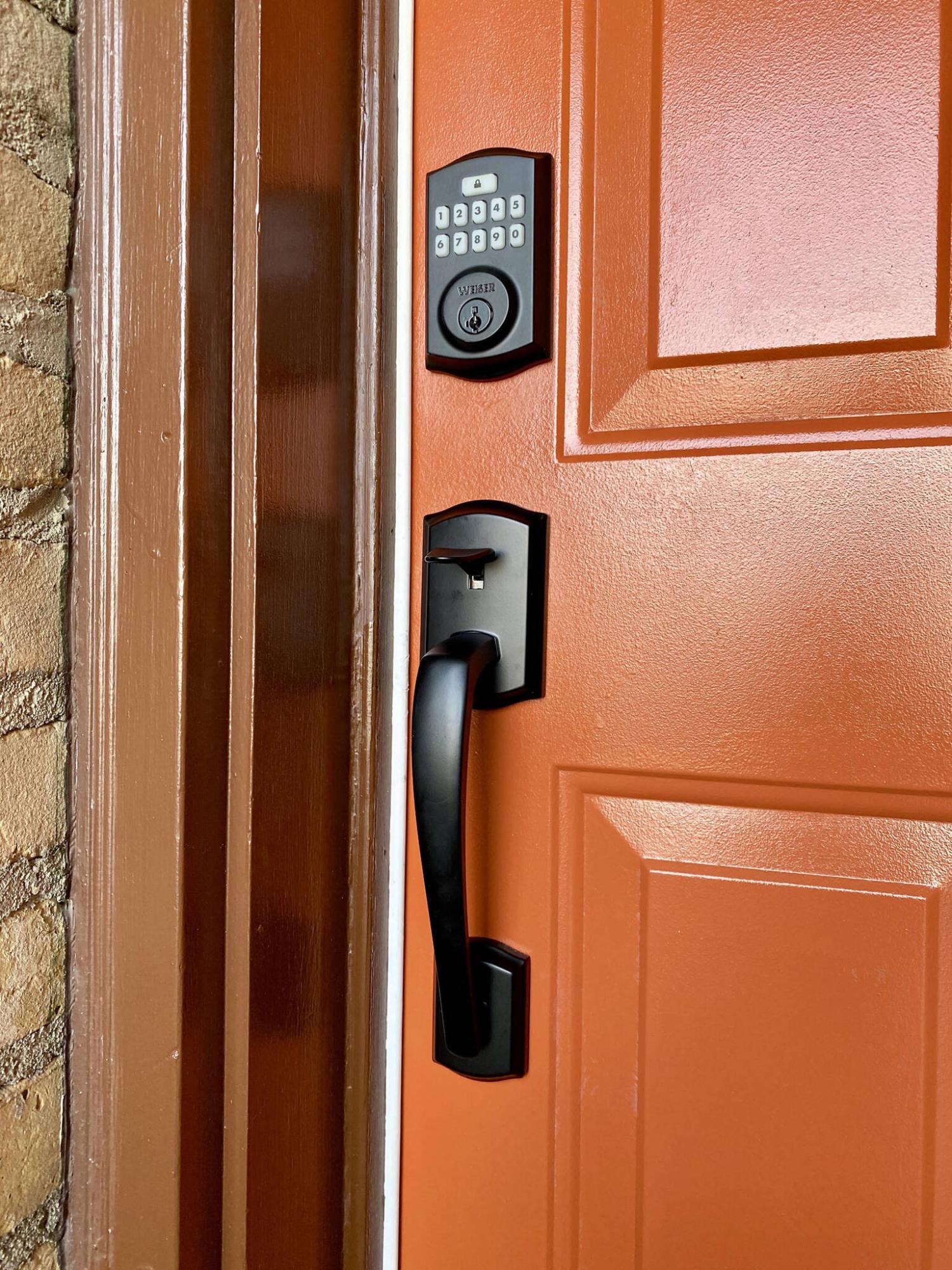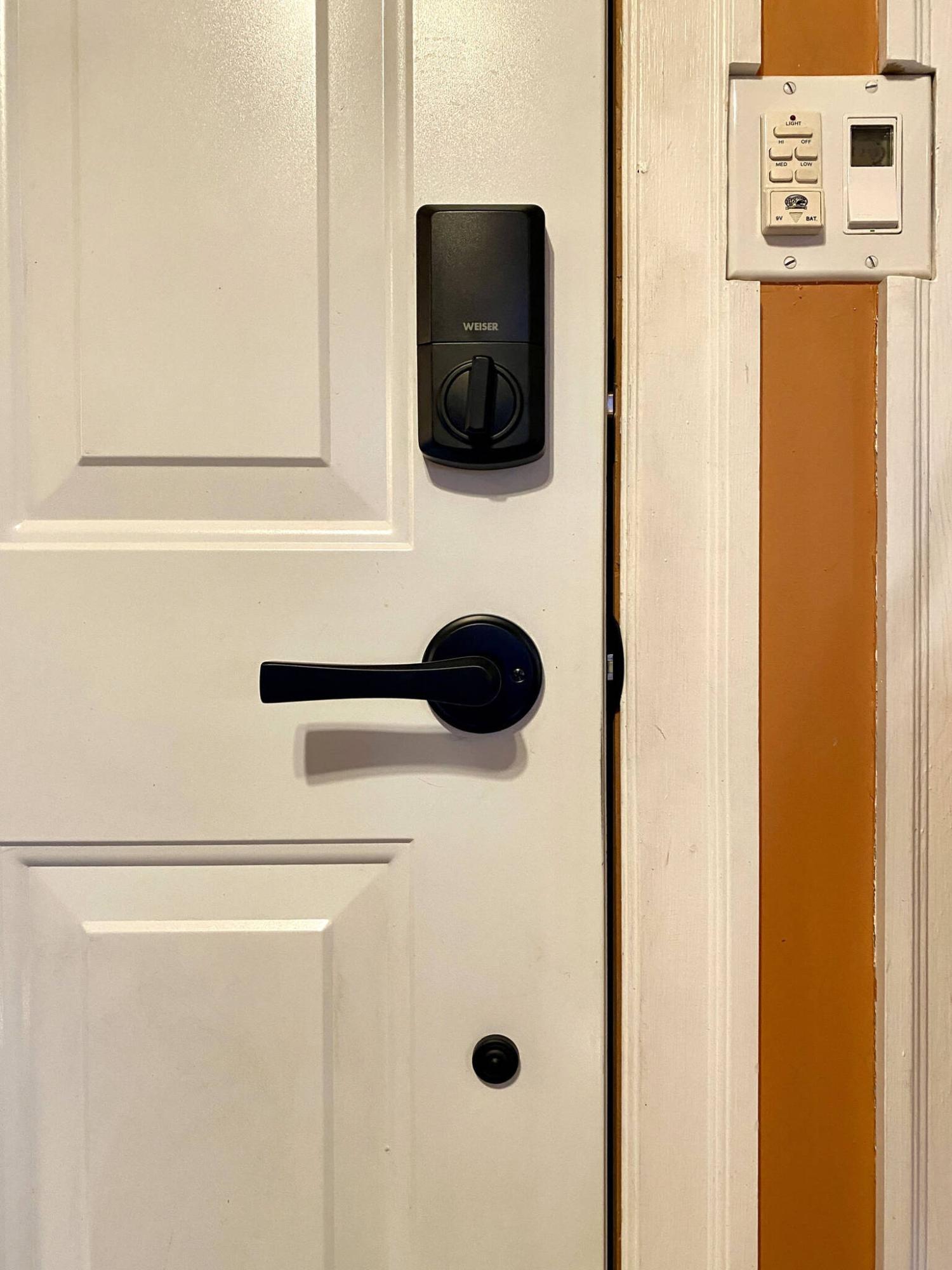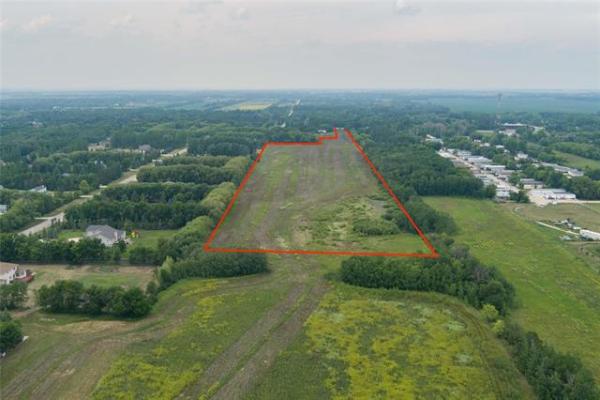
The main entry door to the foyer received a pull-handle upgrade along with the introduction of a keypad.

photos by Marc LaBossiere / Free Press
The interior portion of the keypad deadbolt features a programming button located within the battery compartment.

The keypad allows for keyless entry, provided the deadbolt and strike plate are properly aligned during installation.

Marc LaBossiere / Free Press
The other entry door features the pull handle and standard deadbolt combination.

Marc LaBossiere / Free Press
Once the old door handle and deadbolt are removed, the area is repainted prior to installing the new door elements.
All fellow homeowners will agree that a house is an ongoing commitment. And despite any desire to make esthetic changes, maintenance often trumps renovation or redecoration.
After all, there is only so much money to go around, and even the smallest upgrade becomes cost-prohibitive when the urgency of a required fix rears its ugly head. So we compromise and accept certain imperfect aspects of our house, and make do for a while until urgent issues are addressed and resolved.
When I moved to my current property, the first required upgrade included replacing all exterior doors, including the deadbolts, doorknobs and handles — that was over two decades ago.
Although these doors have functioned well over the years, the doorknobs and handles had recently begun to show wear and tear. And even though the deadbolts still secured the house, they had become finicky, whereby the doors needed to be shoved toward the jamb stop simply to get the deadbolt to pass through the strike plate and lock the door.
We have lived with this flaw for quite some time. A couple weeks ago, however, these doors finally received the attention needed to address diminishing functionality.
The two main entry doors of the house have large exterior handles, with a standard doorknob showing within the interior space, along with deadbolts above. The back door that enters the garages, as well as the main door from the foyer to the garage, have standard doorknobs and deadbolts.
To upgrade these features, new doorknob and handle sets were purchased to mimic the existing scenario. However, in lieu of standard deadbolts for all four doors, the main foyer door, as well as the foyer door to the garage, would receive an upgrade in the form of entry keypad deadbolts.
Furthermore, the flat-black colour choice for the new doorknob/handle sets and deadbolts departs from the gold-brass look of the old sets, which is a huge visual upgrade.
Swapping out old doorknobs and deadbolts isn’t always as easy as it looks. One would think it’s simply a matter of removing the old (which is relatively easy) and mounting in the new (again, fairly straightforward). However, the small adjustments required to ensure smooth operation of the door and its features can be quite time-consuming.
Fortunately, the selected Weiser knobs, handles and deadbolts are indeed easy to install. Moreover, their proprietary SmartKey function allows anyone to re-key a doorknob lock or deadbolt with considerable ease as well.
Once all the new sets were re-keyed to a single key (which I’ve since had duplicated), the old doorknobs, handles and deadbolts were systematically removed from each door, and the new elements mounted one by one.
During the installation process, the two main doors were sanded and given a fresh coat of paint near the handle mount areas, to cover any hints of the old handle location.
Once the paint was dry, the main latch was inserted and secured along the faceplate with two screws. The pull handle and spindle were then inserted from the exterior side, and the interior doorknob is fastened to it using two screws from the interior along the rose, behind the knob.
The deadbolt is mounted in much the same manner, with the cylinder guard and cover placed onto the adapter plate on the exterior of the door, mounted with screws on the interior thumb-turn assembly whereby the spindle protrudes through the deadbolt mechanism.
Once proper operation is ascertained, the strike plates for both the handle and deadbolt are carefully positioned along the interior jamb in such a way as to ensure the door closes snugly, with the latch properly meeting its strike plate and the deadbolt able to insert and withdraw without rubbing. Proper alignment is key for both elements of the door (excuse the pun).
Although the other front door did receive a standard deadbolt as mentioned, the main entry door boasts a keypad deadbolt. The keypad installation is very similar to standard deadbolt installation.
The exterior keypad and key lock portion is mounted onto the provided adapter plate, which allows the spindle to protrude through the deadbolt mechanism to the interior mount, which in this case includes a compartment for a battery to power keypad operation.
Below the spindle, a small junction wire is plugged into the interior mount before the two screws are used to secure the mount to the exterior keypad. Much like the standard deadbolt installation process, the strike plate must be mounted to the interior jamb in such a way as to ensure free movement of the deadbolt mechanism. Any misalignment of the deadbolt relative to the strike plate will render the keypad nonfunctional.
As for the programming of the keypad itself, a handy little “programming button” is located on this interior portion of the deadbolt mount, visible when the battery compartment cover is dismounted. By keying the programming button first, introducing or changing a keypad code is very easy to do.
In all, it took five to six hours to properly upgrade the doorknobs, handles and deadbolts for all four doors. Although swapping out the actual elements and replacing them with new ones was systematic, adjusting the strike-plate locations for proper latch and deadbolt alignment proved to be challenging.
However, having the doors operate so smoothly has been quite rewarding. For over 20 years, we fussed with these doors, as each one had its little quirks. Now that they all work so well, it makes me wonder why I didn’t tackle it sooner.
Actually, I do recall why — it just didn’t rank highly enough on a long list of things to do. Or maybe we just got complacent, and it became one of many little foibles of the house we came to accept. No matter, the doors are finally functioning well, and that’s all that matters now.
RenoBoss.Inc@outlook.com



